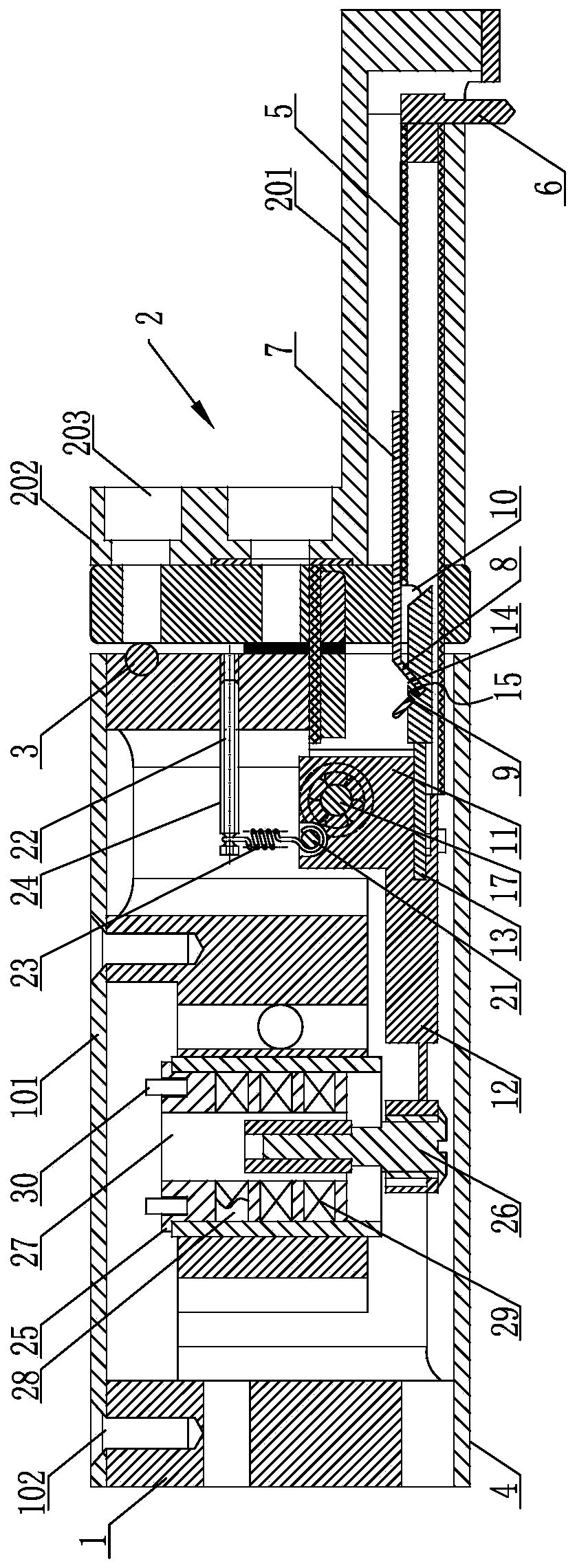Roughness inductive sensor
An inductive and roughness technology, applied in the field of roughness inductive sensors, can solve the problems of insufficient measuring range, large measuring force and large measuring range of the sensor, and achieve the effect of improving the linear range, solving the sensitivity and improving the sensitivity.
- Summary
- Abstract
- Description
- Claims
- Application Information
AI Technical Summary
Problems solved by technology
Method used
Image
Examples
Embodiment Construction
[0034] Below in conjunction with accompanying drawing and embodiment, further elaborate the present invention. In the following detailed description, certain exemplary embodiments of the invention are described by way of illustration only. Needless to say, those skilled in the art would realize that the described embodiments can be modified in various different ways, all without departing from the spirit and scope of the present invention. Accordingly, the drawings and description are illustrative in nature and not intended to limit the scope of the claims.
[0035] Such as figure 1 As shown, the roughness inductive sensor includes a substrate 1, the substrate 1 is configured as a cylindrical structure, and is mainly used to package internal electronic components to form a package protection structure of the sensor, and a detachable button cover 101 can be provided on the outside thereof, Utilize the cooperation of connecting bolt and bolt hole 102 ( figure 1 The connecting...
PUM
 Login to view more
Login to view more Abstract
Description
Claims
Application Information
 Login to view more
Login to view more - R&D Engineer
- R&D Manager
- IP Professional
- Industry Leading Data Capabilities
- Powerful AI technology
- Patent DNA Extraction
Browse by: Latest US Patents, China's latest patents, Technical Efficacy Thesaurus, Application Domain, Technology Topic.
© 2024 PatSnap. All rights reserved.Legal|Privacy policy|Modern Slavery Act Transparency Statement|Sitemap



